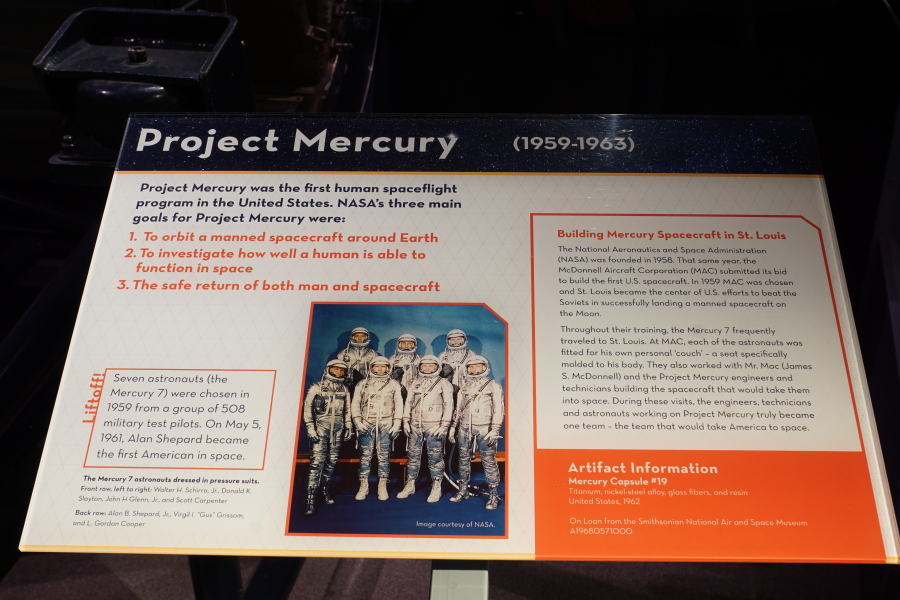| Prev |
heroicrelics.org St. Louis Science Center Site Index Mercury S/C #19 Gallery |
Next |
dscc9860.jpg
One of the signs accompanying the spacecraft. It reads
Project Mercury (1959-1963)
Project mercury was the first human spaceflight program in the United States. NASA's three main goal for Project Mercury were
- To orbit a manned spacecraft around Earth
- To investigate how well a human is able to function in space
- The safe return of both man and spacecraft
Liftoff!
Seven astronauts (the Mercury 7) were chosen in 1959 from a group of 508 military test pilots. On May 5, 1961, Alan Shepard became the first American in space.
Building Mercury Spacecraft in St. Louis
The National Aeronautics and Space Administration (NASA) was founded in 1958. That same year, the McDonnell Aircraft Corporation (MAC) submitted its bid to build the first U.S. Spacecraft. In 1959 MAC was chosen and St. Louis became the center of U.S. efforts to beat the Soviets in successfully landing a manned spacecraft on the Moon.Throughout their training, the Mercury 7 frequently traveled to St. Louis. At MAC, each of the astronauts was fitted for his own personal "couch" - a seat specifically molded to his body. They also worked with Mr. Mac (James S. McDonnell) and the Project Mercury engineers and technician building the spacecraft that would take them into space. During these visits, the engineers, technicians and astronauts working on Project Mercury truly became one team - the team that would take America to space.
Artifact Information
Mercury Capsule #19
Titanium, nickel-steel alloy, glass fibers, and resin
United States, 1962On loan from the Smithsonian National Air and Space Museum
A19680571000

| Time picture taken | Thu Aug 23 14:48:26 2018 |
| Location picture taken |
Lobby James S. McDonnell Planetarium St. Louis Science Center St. Louis, MO |
| Prev | Mercury S/C #19 Gallery | Next |